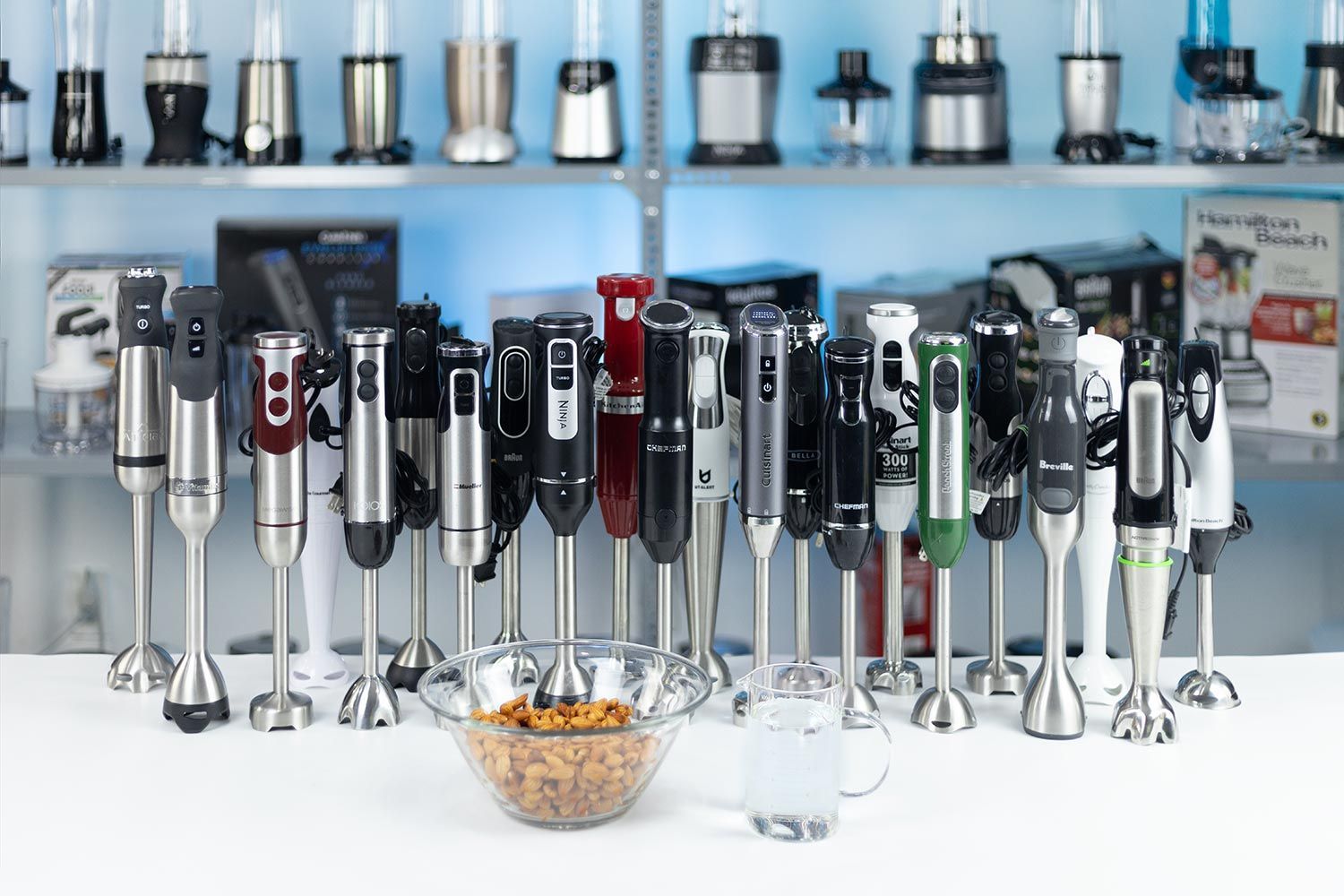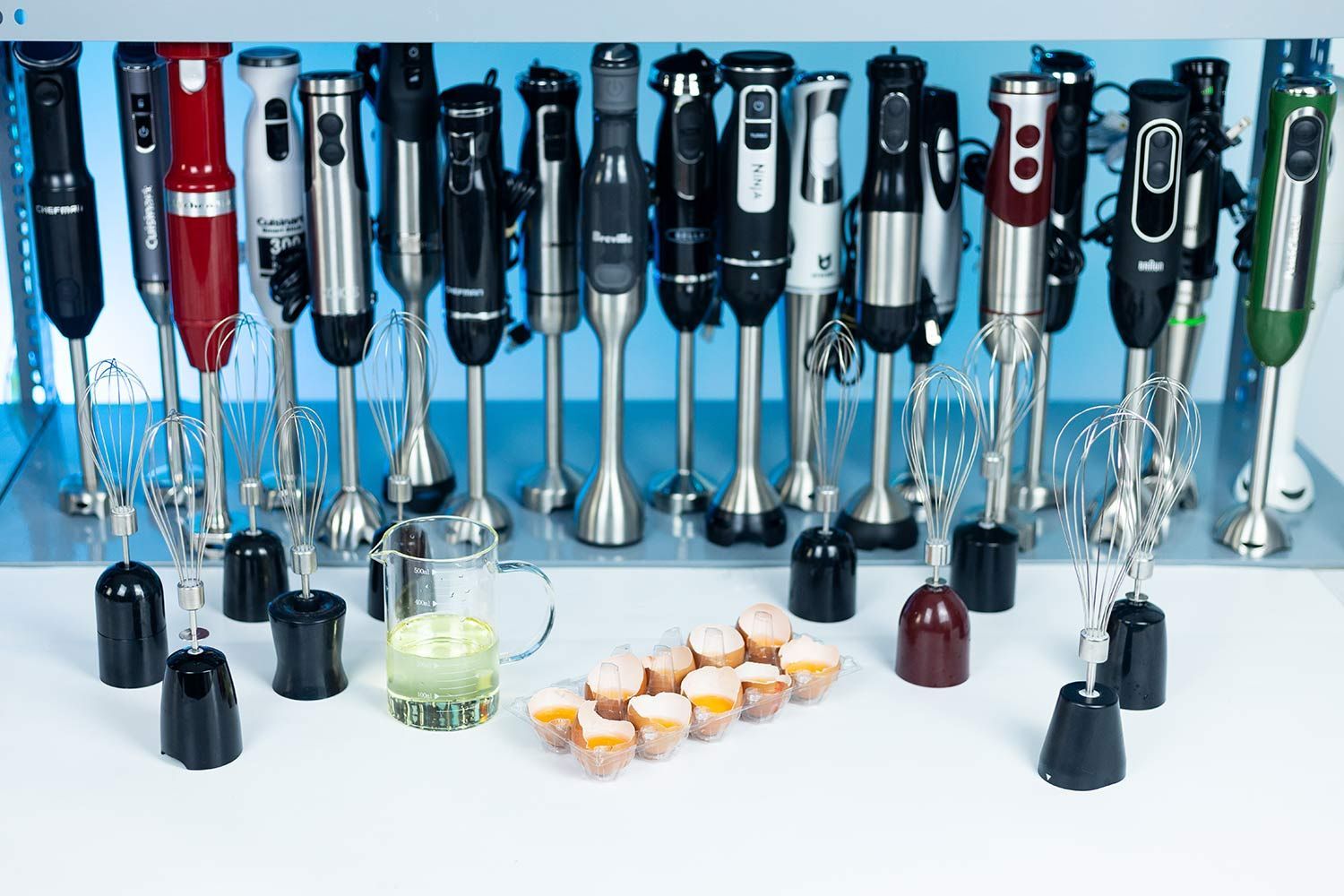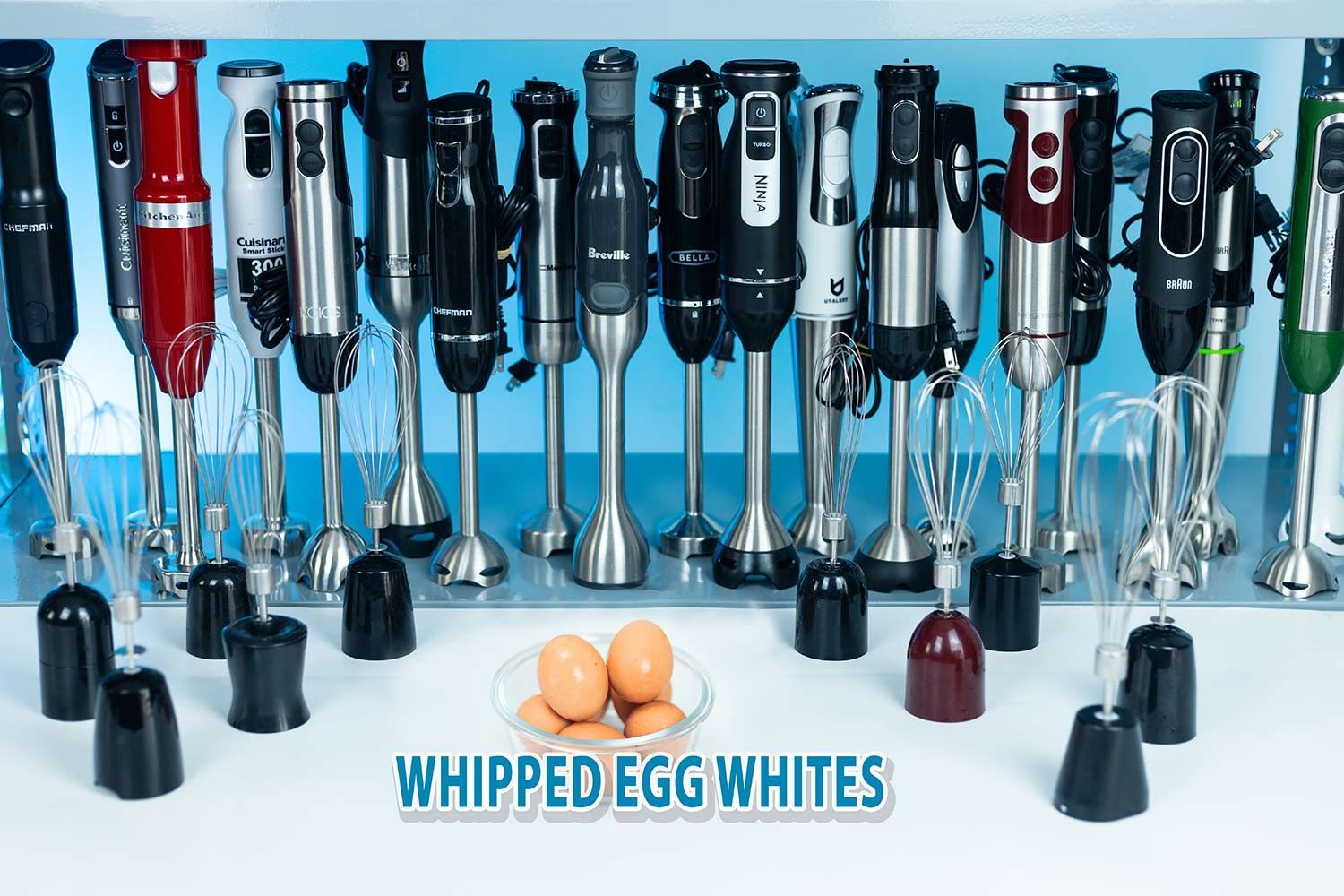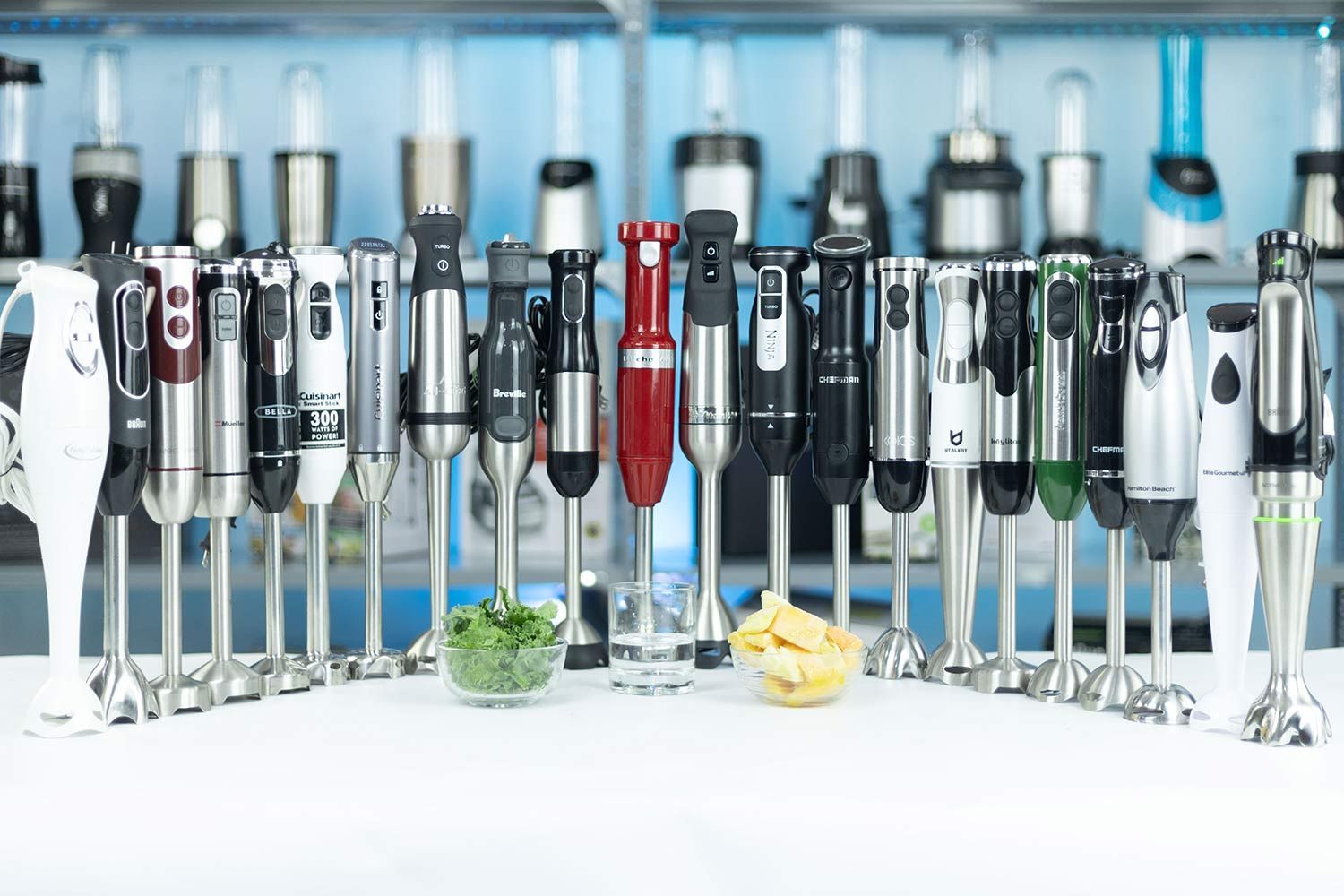Our recommendations are made independently. We may receive commissions from purchases made via our links.
How Shouldit Tests Immersion Blenders v1.0
When prepping for our immersion blenders review, we took a look at several different styles. Though most are made well enough for common tasks like making smoothies, pureed soups, and emulsified sauces, some are more efficient than others.
When prepping for our immersion blenders testing, we took a look at several different styles. Though most are made well enough for common tasks like making smoothies, pureed soups, and emulsified sauces, some are more efficient than others. As such, we decided to buy a range of blenders of our own accord so we could put them all to the test.
As a matter of fact, the tests and testing parameters differ substantially among blender’s types, but all the products under the immersion blender lineup go through the exact same series of tests. That way, we could assign ratings based on a ten-point scale for each of them, equally and comparably.
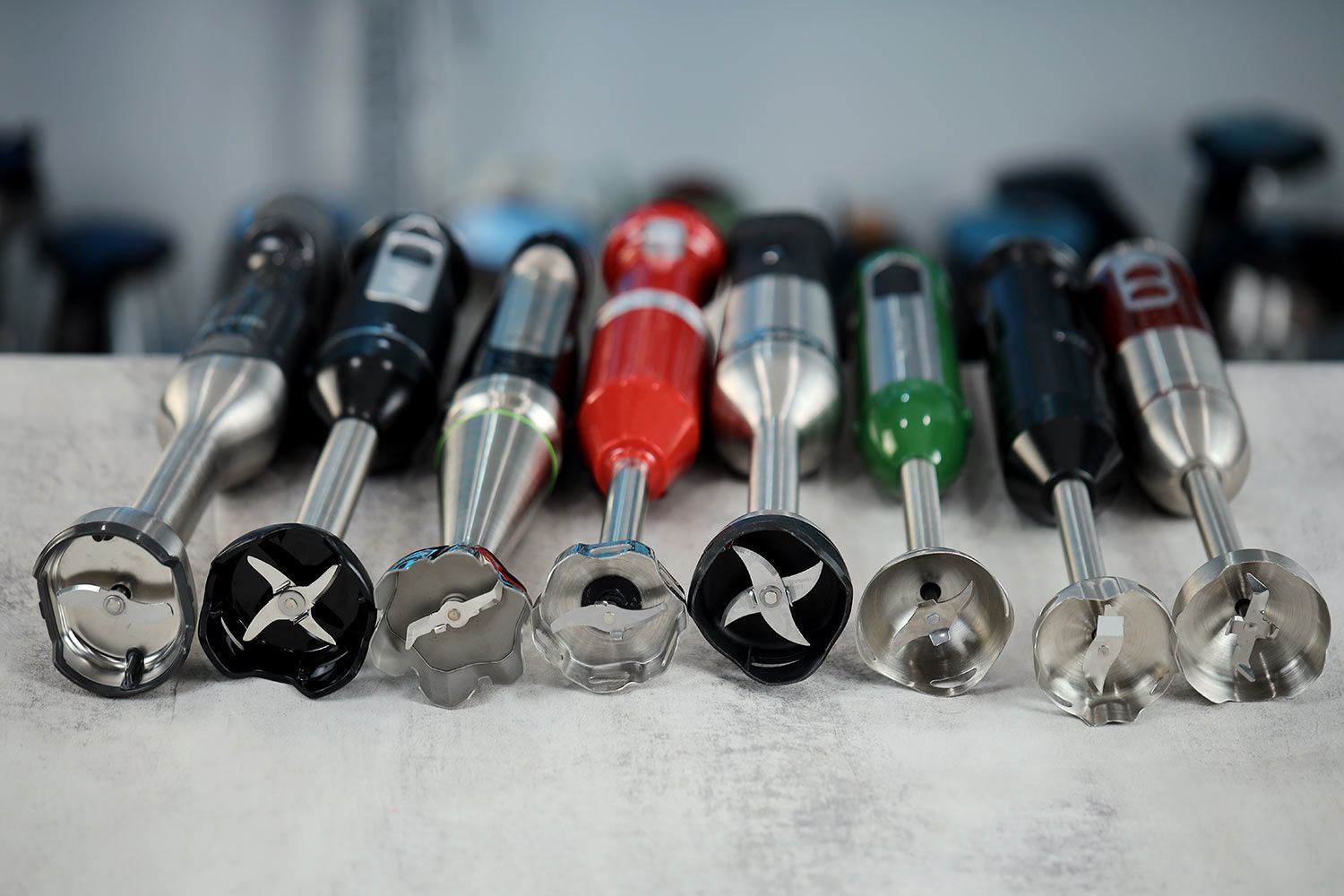
Overall Ratings
The overall score reflects scores given for three sections, but it’s not a simple average. Depending on how essential we consider each section, we would weigh it accordingly.
The three individual scores include: Performance (50%), Design (20%), and Usability (30%). Plus, each of those scores are the compilation of several subcategories. Don’t worry, it’s not as complicated as it sounds!
Performance
To give you a good picture of all the functions that might influence your choice, we put each blender through five tests designed around the most common uses for any immersion blender. We also gave its performance a score on a scale out of 10, which was the average of the five differently-weighted tests and worth 50% of the overall rating:
- Hot Soup Purée: Our hearty soup was packed with carrots, pumpkins, and celery. Through this test, we would determine which blender could provide the perfect creamy and silky texture, among other considerations. Since pureeing is the most important function of a hand blender, we allocated 35% of the total score to it.
- Frozen fruit smoothie: Leafy greens and solid ingredients often pose a challenge for immersion blenders. That’s why, to truly separate the wheat from the chaff, we decided to blend kale, frozen fruits (mango and pineapple), and whole ice cubes. We rated this test 30% of the performance score.
- Mayonnaise: Any best-to-buy blender should be able to make more than just smoothies or soups. We conducted this test, whose score makes up 15% of the total, to gain a clearer perspective on the appliances’ versatility. Our recipe, consisting of egg yolks and canola oil, was simple but it places very specific demands on blending appliances. Simply put, some handheld blenders were up to the task and others weren’t.
- Almond milk:To yield one serving of dairy-free milk, we blended a cup of raw soaked almonds with three cups of water, then strained the mixture through a soft cloth.A good blender should create the milk quickly and shouldn’t make a mess. This test is particularly important for vegans and other users who want dairy alternatives, but not everyone worries about nut milks so we assigned it 15% of the overall score.
- Whipped egg-white: We beated 100ml of egg white to create stiff meringue peaks. At least that was the goal. Some blenders have whisking attachments that make a big difference and make them acceptable alternatives to hand mixers. Others didn’t perform so well. We allocated this test only 5% of the overall score since whipping egg whites is likely to be the most uncommon task, especially when so few blenders come with whisk attachments.
All the tests were recorded on camera to corroborate our results. And because timing is a key to scoring the blender’s performance, we ran a stopwatch for each test.
Design
The overall design’s score made up 20% of the overall rating. We calculated it based mainly on two factors: blade housing and overall construction. Each factor was assigned a different percentage of the design score:
- Blending Shaft: This section was worth 30% of the grade. To earn maximum points, the blender must look sturdy, resist corrosion, and take little or no damage even from heavy-duty use. The blades also need to be partially enclosed by a BPA-free plastic guard rather than a metal one.
- Build Quality: We allocated this section 60% of the total grade. Each blender received a score based on its aesthetic appearance, how solid it felt, and the quality of its materials.
The remaining 10% would be added to the design score if the blender came with its own mixing beaker and a reasonably-sized power cord. Each category received 5%.
Usability
The usability’s rating was allocated 30% of the overall rating. It is more subjective, but reflects our opinions on the blender’s ease of use, blade assembly, handling, and cleanability. Again, some aspects of an appliance’s usability are more important than others so each portion is weighted differently. Our grades break down as follows:
Ease of Use
We assigned this aspect 60% of the total score. A blender with a high ease-of-use score showed itself to be friendly in the following ways:
- It has a simple interface that allows you to easily activate the motor and adjust the speed.
- Its manual controls are responsive and easy to press.
- It’s good enough at drawing ingredients toward its blades. You shouldn’t need to move it around much to thoroughly process the mixtures.
- Suction, splatters, and overflow problems are minor and unlikely. As a result, you can comfortably perform a wide range of blending motions without creating a mess.
Blade Assembly
Accounting for 10% of the total score, the blade assembly grade is an indicator of how easily the blending wand attaches to and separates from the main motor body.
Handling
Because immersion blenders are designed for one-handed operation, they should be comfortable to hold, provide a secure grip, and feel good in your hand. Not only that, but they should also be well balanced to reduce fatigue. This part occupied 20% of the score and may be particularly important if your hands fatigue easily.
Cleanability
Besides letting you know how easy the blender is to clean, this score also helps clarify any challenges posed by the cleaning process. We allocated 10% of the overall rating to it.

